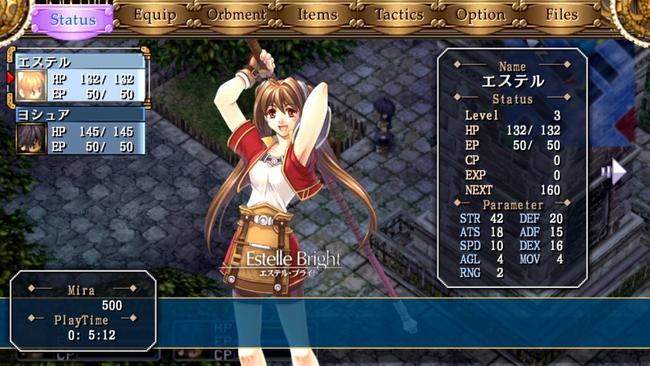
Legend of Heroes: Trails in the Sky Review
As one of the last bastions of hope for a genre that has seen more popular days, XSEED Games have done their part in bringing over unique and enjoyable games that have been well received by JRPG fans in North America. Thanks to their contractual partnership with Nihon Falcom back in early 2010, they have published four different Ys games since then that have all been critically lauded for one reason or another.
Although that series is all well and good, XSEED now have their eyes set on a trilogy of games they are calling The Legend of Heroes: Trails in the Sky. Also known as Sora no Kiseki in Japan, PSP owners may remember that there were already three games in this series released in America to date, which was due to the fact that the games were released here completely out of order and left gamers lost. Fortunately in this case, Trails in the Sky is its own separate entity made up of three chapters with their own characters and story.

Trails in the Sky takes place in the city of Rolent in the Liberl Kingdom which is home to the independent Bracer Guild, a legendary organization that brought an armistice to the world over a decade ago. Friends Estelle and Joshua are rookies who aspire to be Bracers themselves, and take up different peacekeeping missions that lead them to the different corners of the world, with a priority of keeping the lands and its people safe from danger. During their travels, they discover a dark organization with the intent of destroying the very fabric of society that the Bracers have spent their entire existence preserving.
The politically-driven story takes its sweet time getting into gear, but once it does, everything unfolds in prodigious fashion. The dynamic between Joshua and Estelle (hilarious on many occassions) along with the people they meet along the way develops into this intricate dance of intense and emotional relationships that will leave you compelled to continually move further and further along in this 40+ hour rollercoaster journey into the stellar climax. The cutscenes look amazing, the modernized dialog is exceptional (though it contains little to no voice acting, a small critique), and many of the characters are endearing in their own way. Even the way you communicate with each character has a direct impact on the story, so players will want to tread lightly in the way they respond to others.
After engaging in battle with one of the many beastlies that visibly roam around the field map, traditional JRPG fans will feel right at home with the turn-based combat that the game utilizies. Characters are laid out on a grid, and each of their attacks and spells have their own area of effectiveness. Being a fan of games that include real-time battles, it is a good enough trade off where factors such as placement and range are still important in order to succeed. Planning before battles is key.

Through the use of Orbments, a very important technological discovery in the world inside the game, characters are also able to use different offenseive, defensive, and magical abilities that help them help each other out in their own individual way. Players can create different orbments by composing quartz that are created in one of the different workshops throughout the game. Quartz themselves are fashioned by a material called sepith that can be obtained at the end of battles. These orbments can be augmented through various means including the use of stronger quartz. The use of orbments in battle creates a very strong strategic focus, to say the least, allowing players to optimize their characters for different combat situations.
However, even if the odds are stacked in the enemy's favor, the game includes a a "Retry Offset" feature that I found myself using on a few occasions especially during some of the more difficult boss battles towards the end of the game. Use it once, and you get another chance at the battle, hopefully with a better strategy. Use it again, and the enemies are made a little weaker. In consecutive uses, the enemies will get progressively weaker until your sorry excuse for a group becomes overpowered and you can finally move on to the rest of the story.
Aside from the fact that the game includes little to no spoken dialogue and it can get rather confusing at times figuring out where you need to go during quests, I had a good time playing Trails in the Sky. Sure, by today's standards the visuals can be seen as rather dated in comparison, but as a child of the 90's, this the kind of stuff I personally love and admire so long as it is done right, and with the amount of depth this game has and how well the story picked up admittedly after its slow start, I can't find any real faults worth mentioning. This is a very solid RPG that PSP owners would really benefit by picking it up - you'd be hard pressed to find a more value-driven game for your Sony handheld.
By the way, anyone who has ever been to an anime or gaming convention and seen an exhibitor showcasing imported titles have probably noticed the ginormous box for the original Windows version of Sora no Kiseki taking up most of the space on the table. Maybe XSEED will consider doing that after all three chapters are out. Wishful thinking!